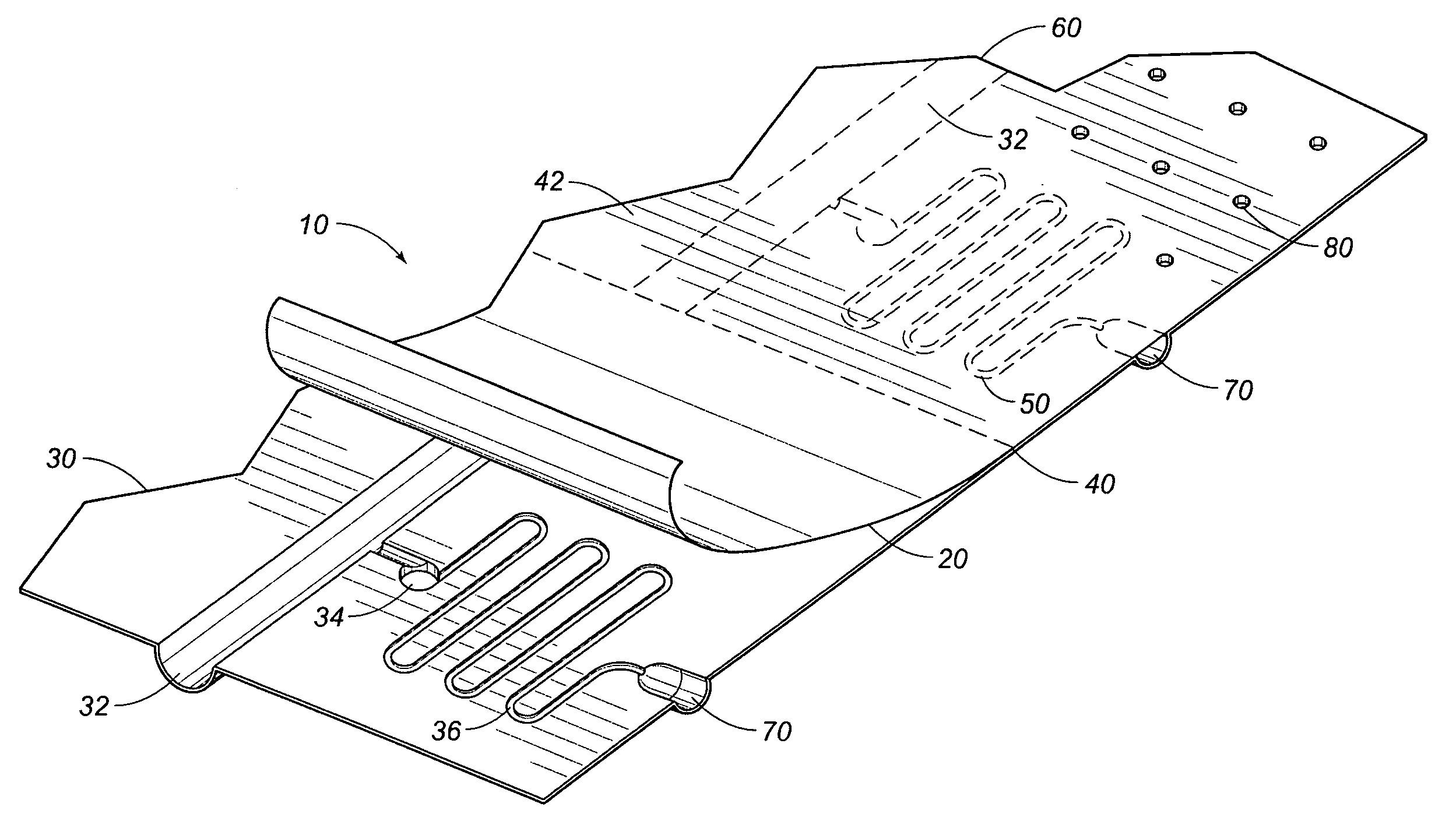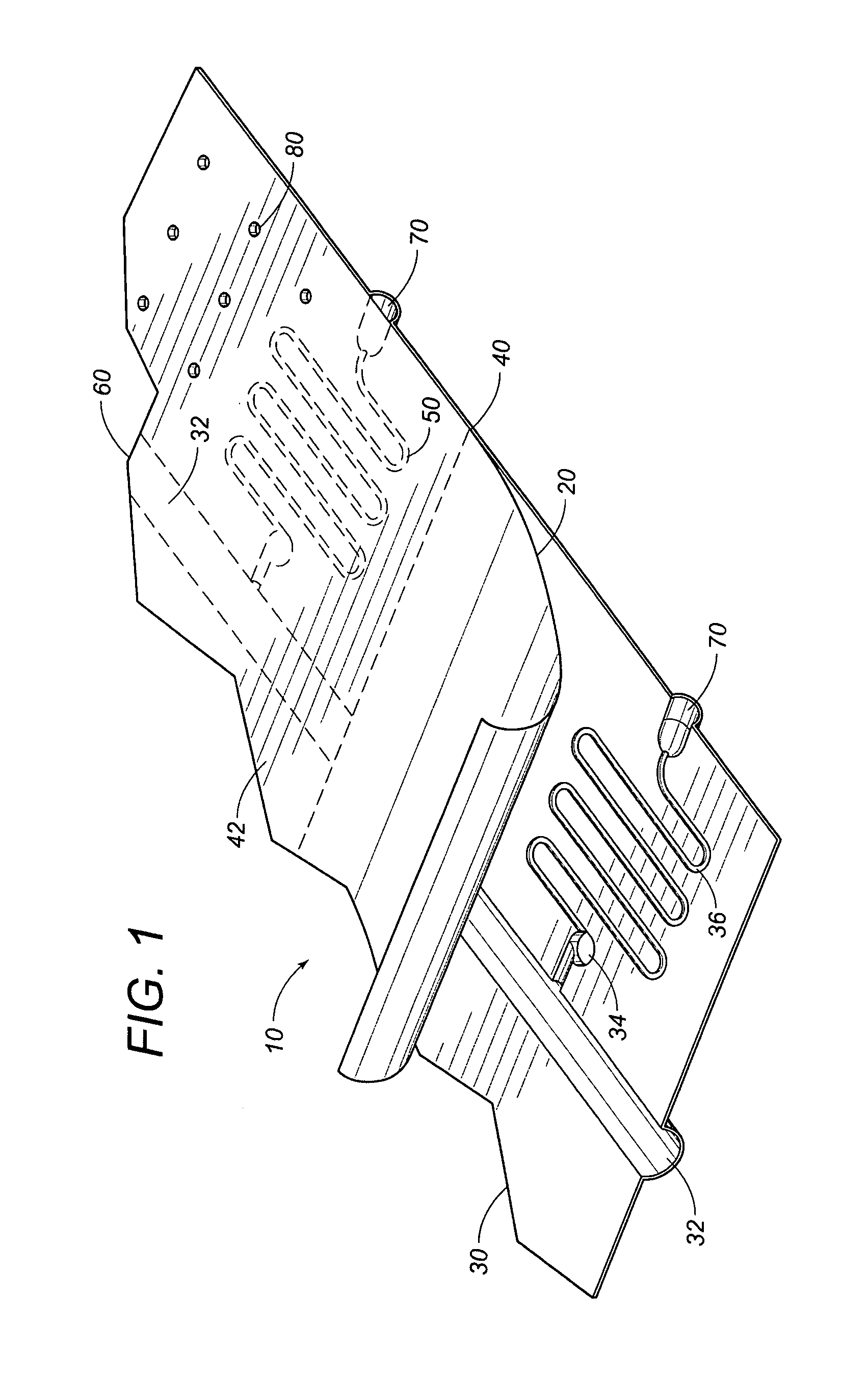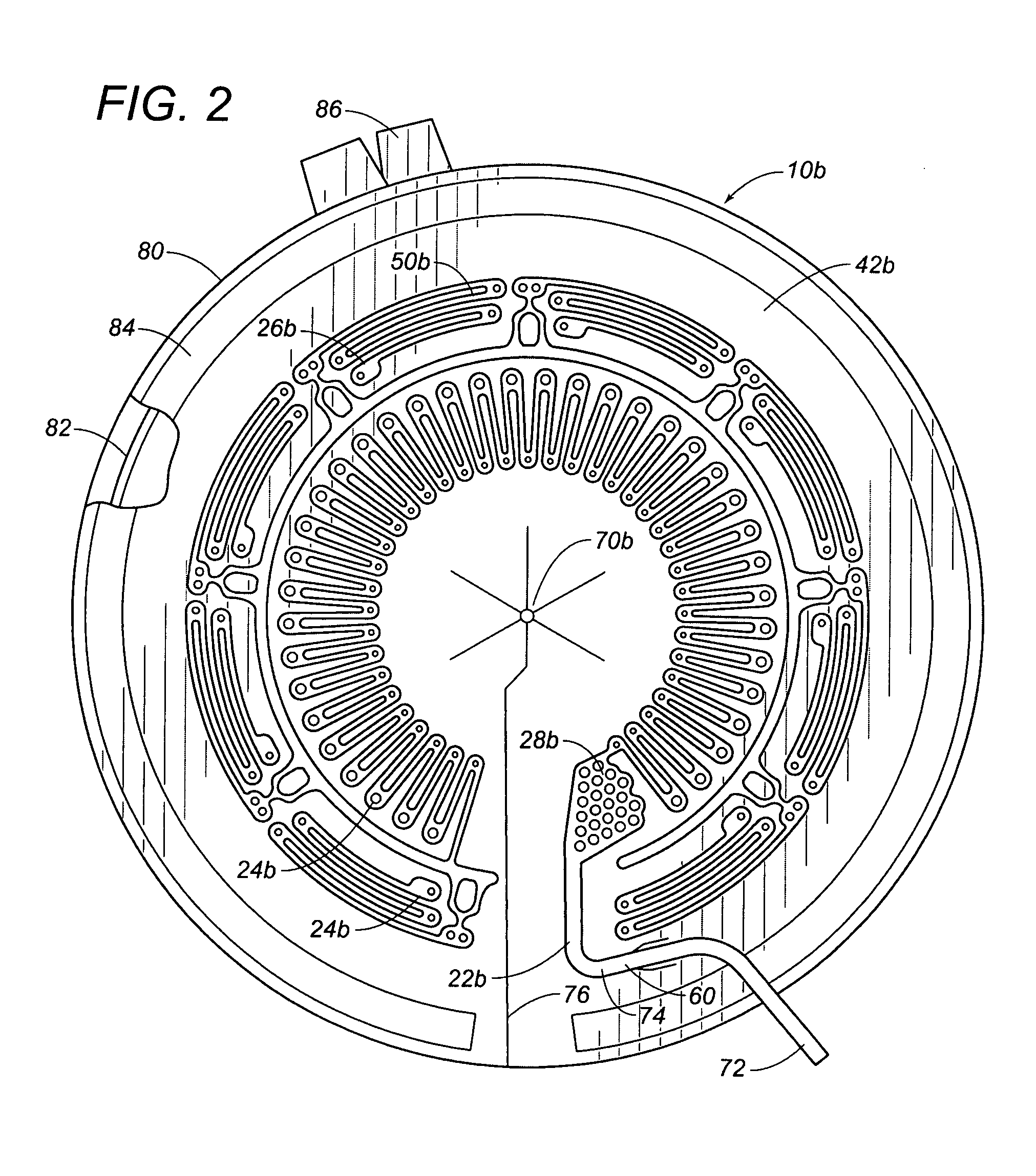Unitized mat to facilitate growing woody plants
a unitized mat and plant technology, applied in watering devices, lighting and heating equipment, combustion types, etc., can solve the problems of large complexity and cost of drip systems, limited durability of tubes, and relatively high cost of both types of soaker hoses
- Summary
- Abstract
- Description
- Claims
- Application Information
AI Technical Summary
Benefits of technology
Problems solved by technology
Method used
Image
Examples
second embodiment
[0070]FIG. 3 depicts the current invention, generally indicated at 10c, designed to provide irrigation and mulch to a straight row of woody plants such as experienced in a commercial orchard. In deviation from the construction depicted in FIG. 2, a grid of outlet ports 26c are provided to evenly distribute irrigation water over the entire surface covered by the laminated assembly 42c. A network of enclosed passageways 50c connect the inlet 60 to the outlet ports 26c. The enclosed passageways 50c include a longitudinal distribution channel 22c running down the length of the device 10c. Debris traps 28c are connected at consistent distances along the distribution channel 22c by way of flared connecting sections 23c. Flow restricting passageways 24c are incorporated into the enclosed passageways 50c between the filter 24c and the outlet ports 26c. It is noted that optional debris traps 25c can be included in the flow restricting passageways 24c to catch any debris that might accumulate...
third embodiment
[0075]FIG. 4 depicts the current invention, generally indicated at 10d, designed to irrigate woody plants spaced at inconsistent distances, such as found in home and industrial landscaping. It will be noted that the laminated assembly 42d is made circular and wide enough to act as a mulch ring around the base of the plant. It is connected to a water source by a small diameter tube 72d. The polymeric film layers 20d &30d may be any color so that the mulch offers the woody plant optimum growing conditions. For example, using black polymeric film on the top layer 30d will result in some additional retained solar heat in the growing medium while white will tend to reflect heat and light. In this manner, inverting the device 10d could present a different color on the upper surface and thus improve growing conditions throughout the seasons. The device 10d may be covered with organic mulch.
[0076]The laminated assembly 42d is perforated with output ports 26d. These outlet ports 26d are spac...
first embodiment
[0078]FIG. 5 depicts the current invention in use as intended on a growing container 100. The device, generally indicated at 10b, is again designed to be used to irrigate and effectively cover the containers in which woody plants are grown in greenhouses, landscape nurseries, and home applications. For reference, each polymeric layer would be approximately 0.004 inches thick while the outer edge 80 would have a diameter between approximately 6 and 25 inches, depending on the size of the container 100.
[0079]The device 10b is placed around the woody plant 90 by opening the overlapping seam 76 and pulling the serrated opening 70b around the trunk 92. The serrations 71b open to accept the size of the trunk 92. The overlapping seam 76 is then closed. The outer edge 80, overlapping seam 76, spring 82, and optional flexible extensions 86 all act to minimize any opening. The spring 82 also acts to keep the device 10b flat and retain it inside the container 100 by applying an outward force t...
PUM
| Property | Measurement | Unit |
|---|---|---|
| pressures | aaaaa | aaaaa |
| pressures | aaaaa | aaaaa |
| length | aaaaa | aaaaa |
Abstract
Description
Claims
Application Information
 Login to View More
Login to View More - R&D
- Intellectual Property
- Life Sciences
- Materials
- Tech Scout
- Unparalleled Data Quality
- Higher Quality Content
- 60% Fewer Hallucinations
Browse by: Latest US Patents, China's latest patents, Technical Efficacy Thesaurus, Application Domain, Technology Topic, Popular Technical Reports.
© 2025 PatSnap. All rights reserved.Legal|Privacy policy|Modern Slavery Act Transparency Statement|Sitemap|About US| Contact US: help@patsnap.com



